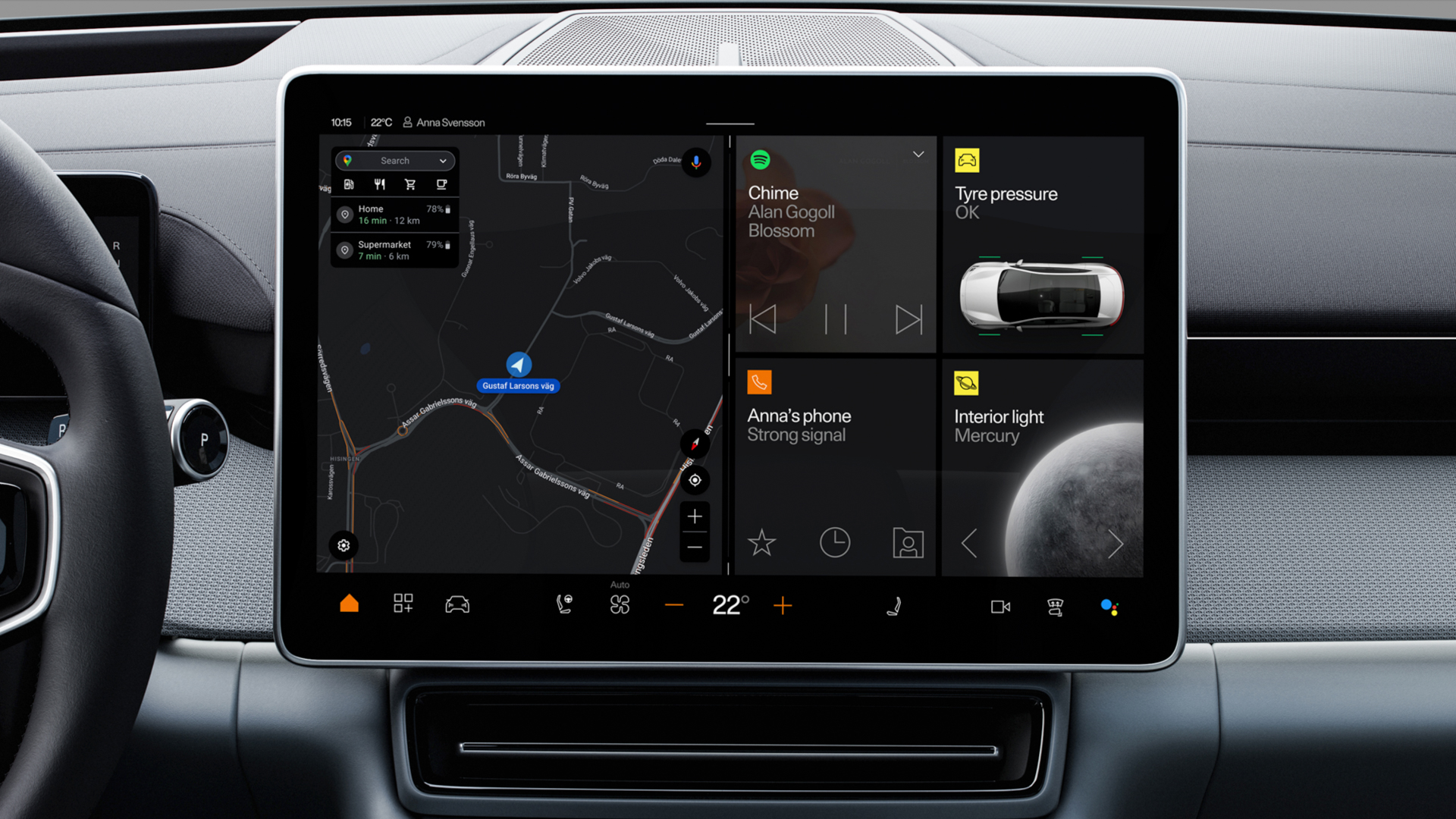
There's a new version of Android Automotive with support for a range of new features.
It's down the car manufacturer to push these new features to your car, so there's no telling if or when you'll get them.
Android Automotive doesn't get as many headlines as Android on your phone, but it moves on an annual cycle just like the phone software. That could see new functionality coming to your car in 2024, but at the same time, much will depend on what your car manufacturer decides to do with it.
Android Automotive has the potential to be slightly complicated. The system that runs from your phone is called Android Auto – you have complete control over that and it's powered by your phone. Android Automotive, on the other hand, is a software platform that runs on your car, powering the infotainment experience.
Volvo and Polestar are great examples of Android Automotive and this gives an Android-based system with access to Google services, like Google Maps, the Play Store for apps and Google Assistant for voice interaction. You'll sign in with a Google account on your car to get things up and running.
It can get a little more tricky than that, however, because you can also get Android Automotive without the Google services, so it doesn't have access to things like Google Maps or those Google apps. In this instance, Android Automotive is purely used as a software layer to build on – and that's what brands like BMW have used in recent models.
So whether you'll get any of the changes is dependent on a number of factors, because it's under the control of the manufacturer to a certain extent. This might be why Google hasn't said a huge amount about these changes. But, as highlighted by Android Authority, there are a number of changes that come with the latest version of Android Automotive – and they're pretty neat.
The new features coming to Android Automotive
One of the big new features is the ability to connect a Bluetooth headset. This might sound a little niche, but it's likely to be targeted at expanding the entertainment options for passengers, meaning the driver can continue in peace, while the kids are entertained on their own headsets.
There's also going to be a new app dock, allowing you to pin your favourite apps to the bottom of the screen for easy access, so you can reduce the amount of clicks needed to get to what you want. Some Android Automotive systems already have some sort of app pinning – but as I said, exactly how these changes are implemented will depend on the manufacturer.
There's also mention of a screen saver, which will likely be completely customised by the manufacturer.
For those who use the hotspot on a regular basis, you'll be able to have this on all the time between driving sessions, so if your kids always connect to it, it will be there, rather than having to be toggled on manually each time.
Finally, just as we've seen with Android Auto, there's also going to be support for the radio hardware that's installed in your car. This should give you the option to control broadcast radio rather than it all being streamed internet radio. That could reduce data usage and provide more reliable access to radio when in remote areas.
As I said, however, there's no telling when or what features might come to your car – but Google has at least added this support to the core software.







